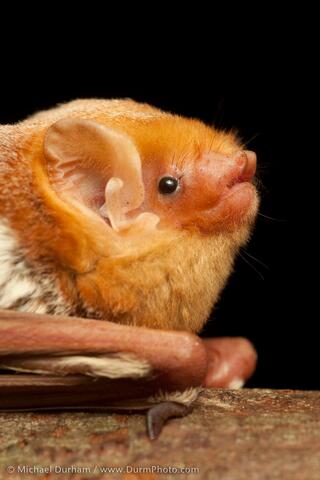ACES expert: Bats take spotlight during Bat Week

Bats come out of the shadows during Bat Week (Oct. 24-31, 2023), an international awareness campaign that aims to educate the public about bat conservation in the week leading up to Halloween. University of Illinois Urbana-Champaign bat expert Joy O’Keefe explains the threats to bats and how we can help.
On environmental threats to bats:
“Habitat loss is a big problem for bats. Most bats in the U.S. depend on forests for some portion of their lifecycle, as forests provide crucial foraging and roosting habitat. So, the loss of forests is a challenge bats have been contending with for a long time,” said O’Keefe, assistant professor in the Department of Natural Resources and Environmental Sciences and Illinois Extension, part of the College of Agricultural, Consumer and Environmental Sciences (ACES) at U. of I.
O’Keefe also mentioned losses of migratory bats (and birds) due to wind turbines; declining insect populations that make up the diets of most North American bats; severe weather effects on bats due to climate change; and, of course, the devastating impacts of white-nose syndrome.
On why we should care:
“There's not another mammalian group that comes close to being as cool as bats. They’re completely unique; they’re the only mammals capable of true powered flight and perform all sorts of cool feats like echolocation and navigating in the dark,” O’Keefe said. “Bats are just so diverse in form and function: the types of echolocation calls they use, the structures on their faces, their coloration, where they roost, and what they eat. The list just goes on and on.”

O’Keefe noted bats perform essential ecosystem functions that benefit humans, including consuming hundreds of insects every night, many of which negatively impact crops, forest regeneration, and human health. Bats are also key pollinators and seed dispersers in some parts of the world and are important prey for many wild animals.
On how we can help:
“Start by appreciating bats where you live. Ironically, Bat Week isn’t a good time to see bats in much of North America, as many have started their hibernation or are migrating south. But you should make plans to go out on a warm summer night next June, July, or August. You will surely see bats flying around your neighborhood,” O’Keefe said. “Make note of where they're foraging and what features they're attracted to and try to improve the availability of those types of habitats, like big trees, in your neighborhood. And then tell people about how awesome bats are.”
She said homeowners can plant native species to support the insect populations that feed bats. Turning lights off at night, offering sources of clean water, and advocating to protect local trees and forest habitats are additional beneficial steps, according to O’Keefe. Thinking of installing an artificial roost? Her research says homeowners should think twice.
On bat appreciation:
“People tend to be scared of bats because we fear what we don't understand. For most people, they're out of sight, out of mind until they are personified as a scary villain,” O’Keefe said. “But, by and large, bats are just doing us favors left and right, so we should appreciate them and not be scared of them.”
O’Keefe said Bat Week and other awareness efforts appear to be making a dent in public sentiment around the misunderstood creatures.
“In the past 15 years, I've noticed that bat decorations have become decidedly more friendly. You used to see mostly scary bats with fangs, but now it's more smiling, friendly bats,” she said. “Let’s be sure to depict how varied and wonderful they are this Halloween.”
O’Keefe does research to understand bats’ biology, their roles in ecosystems, and how our conservation efforts may help or harm the unique creatures.